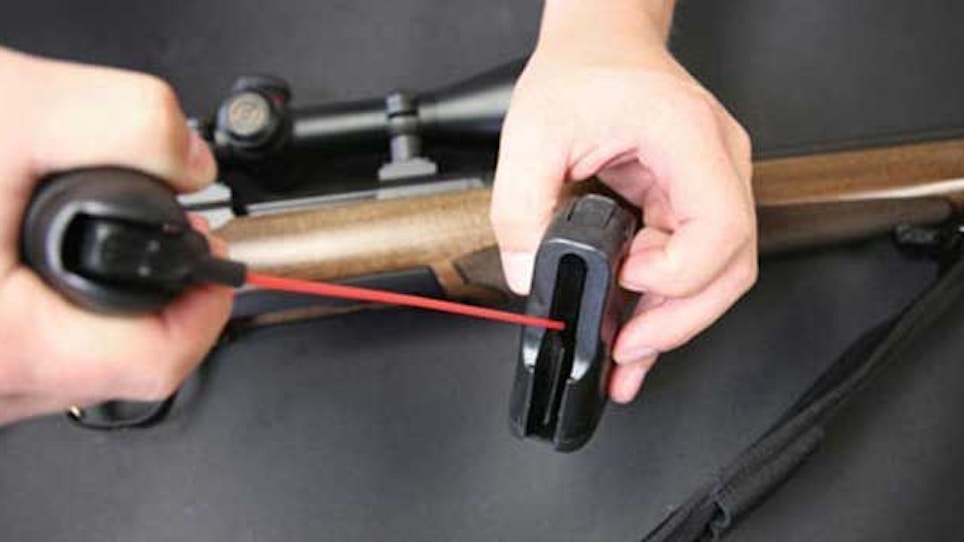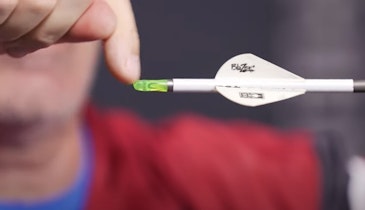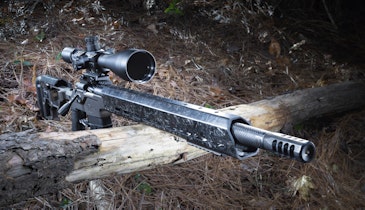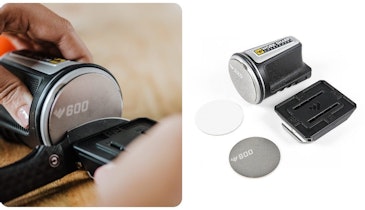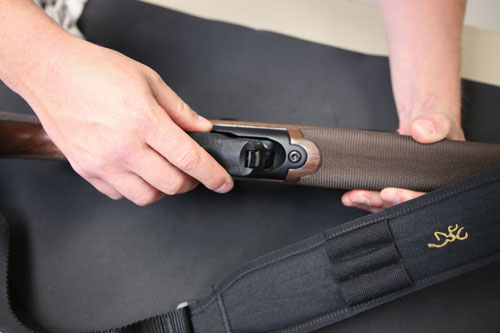 I would guess, after several decades of writing about guns, that the three most commonly misused terms I hear are “bullets” for cartridges, “.45 Long Colt” for .45 Colt, and “clip” for magazine. Of course, a bullet is but one component of a cartridge, .45 Long Colt is an accepted but improper name for the .45 Colt, and a “clip” is just a device used to feed or load a magazine.
I would guess, after several decades of writing about guns, that the three most commonly misused terms I hear are “bullets” for cartridges, “.45 Long Colt” for .45 Colt, and “clip” for magazine. Of course, a bullet is but one component of a cartridge, .45 Long Colt is an accepted but improper name for the .45 Colt, and a “clip” is just a device used to feed or load a magazine.
The magazine is that portion of any repeating rifle, shotgun or handgun that holds the cartridge at the ready to be fed into the action by the bolt. It is one of the most intricate, precise and complicated portions of a firearm design, a crucial element in reliability, the single feature that sets repeaters apart from single-shots, and the most overlooked area in the firearm by shooters.
Let’s take a minute and look at what we ask the “simple” magazine to do. It must store multiple rounds of a very odd-shaped component, narrow and pointed on one end and fat and blunt on the other. It must hold them in proper alignment, at a precise angle, to be picked up by the cycling of the bolt, yet out of the way of the ejecting spent case. Precise tension and pressure must be maintained on all the cartridges from the first out of the fully loaded magazine to the last one at the very bottom. In the designs meant for killing men in the heat of battle, they must function flawlessly whether worked slowly or frantically.
Humble? Simple? Not hardly. I know of several competent engineers and gifted gunsmiths who have looked at the “primitive” magazine design in the granddaddy of all bolt actions, the Mauser of the 1800s, and sneered at the “sloppy” fit of the spring and follower plate. In each case, they tooled up to “fix it” for a tighter fit, or a more rounded, smoother plate, or to replace the flat, awkward, multiple “W” bend with a high-tech spring or two. All were dismal failures, tossed out because none had the reliability and repeatability of that brilliant Prussian’s first and obviously well-thought-out, century-old design. It’s a design still copied by Remington, Winchester, Savage, Marlin, Weatherby and anyone else in the bolt-gun business. There are lots of R&D dollars among that prestigious group as well as a whole boatload of engineers, but none have yet to better the century-old design.
Magazine Problems
Part of the reason so little thought is given to magazines lies in the very brilliance, time and thought that went into their design. For the most part, with just a bit of maintenance, you rarely have to think about them — but ignore that bit of maintenance and nothing will shut you down quicker than a magazine with problems. I would bet that at least half the AR feeding problems are from magazine problems (the other half being crud buildup) and that most feeding problems in bolt, lever and semiautomatic actions can be traced to magazine neglect.
Care And Feeding
There are five basic magazine types that cover most repeating firearms.
Tubular magazine, either along the barrel or in the buttstock. Almost all semiauto shotguns and a majority of rimfire .22s use tubular magazines, and it’s a common lever-action approach.
Box magazine, with cartridges held in a single column. Rifles and pistols, both centerfire and rimfire, use this style.
Box magazine with cartridges held in a staggered double stack (more of a zigzag than an actual double stack). Used with both rifles and pistols, it is generally employed to get more of the larger rifle and pistol cartridges in the magazine.
Revolving box magazine, like those found in Ruger .22, Savage 99, Mannlicher Schoenauer and a few recent imports.
Box magazine where cartridges are held in a separate clip (or as the Brits say, a charger) inside the actual magazine. These are mostly used in military rifles like the M-1 Garand.
Some nitpickers might want to add the oddball or two (drum, pan, helical, etc.), but for the most part, this lineup covers them pretty well. Here are a few “must-dos” to keep each style working at its best.
Tubular Magazines
Periodically pull the tube. In the rimfire world, the spring assembly and follower will be in the rod inside the tube. In shotguns, the spring will be a separate removable unit held inside the magazine tube. Run a cotton mop down the tube to clean it. Don’t use a jag and patch unless you’re positive you can’t lose the patch. Fishing for a lost patch inside a .22 tube teaches a lesson you won’t soon forget. I do not use oil on the inside of any magazine other than to wipe the internal spring with a lightly oiled rag. Excess oil draws and holds dirt like a magnet, eventually turning fine dust into problem-sized chunks that will lock up the spring and follower. Use oil very sparingly, or better yet, use dry graphite. This holds true for the innards of every magazine type.
Blind And Box Magazines
In single- or double-stack blind magazines found inside the rifle stock with no floor plate, be sure to clean out any crud that finds its way inside the blind box. You’ll have to remove the receiver from the stock to get to it. Use very light oil on the steel spring to keep it rust-free, and check for burrs, rust and bumps where the follower rides along the metal magazine walls. On a box magazine with a trapdoor floor plate, do the same thing, but you must check for crud buildup, usually oil related, in the release button that drops the floor plate. Crud buildup usually (and slowly) prevents the latch from fully closing, which means even a slight touch, sometimes just recoil, will dump the whole load in the dirt. Use a spray degreaser to get inside the latch and dry graphite to keep it slick. With a removable box magazine, remember that excess oil is generally the culprit of malfunctions, with a close second being the angle of the rails or tabs that guide the case. Most AR-style feeding problems zero in right to that area. Many removable box magazines can be taken apart — often a dicey procedure, but it can be done. I use a lot of spray carburetor cleaner found in auto parts stores, followed by a blowout with my compressor or canned air. Toss any magazine out that gives you constant feeding problems — they’re not worth the hassle.
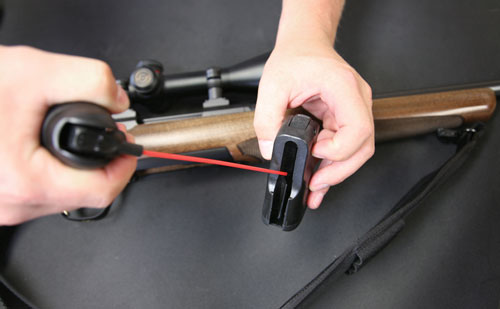 Canned air and carburetor spray are the best answer for the box magazines that are difficult to disassemble. These include everything from the little Ruger 10/22 on up to the big AR high-capacity magazines, but use it cautiously and sparingly where internal components are made of plastic. Some carburetor cleaners will gum up plastic. When in doubt, swab with plain rubbing alcohol and blow dry.
Canned air and carburetor spray are the best answer for the box magazines that are difficult to disassemble. These include everything from the little Ruger 10/22 on up to the big AR high-capacity magazines, but use it cautiously and sparingly where internal components are made of plastic. Some carburetor cleaners will gum up plastic. When in doubt, swab with plain rubbing alcohol and blow dry.
Loaded Or Unloaded
All sporting firearms, from .22s to rifles and shotguns, should always be stored unloaded, with all tension off the springs and followers. That’s a no-brainer, but the standard question that always pops up with detachable magazines for AR rifles or semiauto pistols is, store them loaded or empty? Personally, those magazines stored by the bedside stay full, while all others are stored empty. Manufacturers claim the spring inside the magazines won’t take a set and weaken if stored compressed for a long time. I don’t buy it, and other than those that must be kept full up and ready, I leave the extras empty. Never store or put away any gun, from .22s to shotguns, with a round in the magazine. That’s a calamity in the making.
Pay attention to your magazines. They don’t demand much, but to ignore them or take them for granted is asking for trouble.
